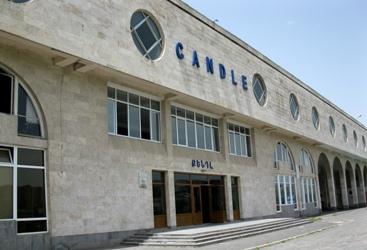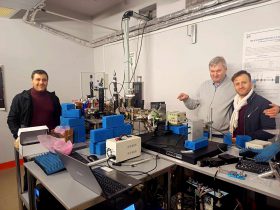February 8, 2019
A new approach for the generation of an ultra-short bunch train has experimentally been demonstrated at the Photo Injector Test facility in Zeuthen-PITZ (DESY, Germany). The results are presented in the paper by F. Lemery, et al., “Passive Ballistic Microbunching of Nonultrarelativistic Electron Bunches Using Electromagnetic Wakefields in Dielectric-Lined Waveguides” which has been published in Physical Review Letters. The study has been carried out by the scientists from DESY (Germany), Northern Illinois University (USA), Fermi National Accelerator Laboratory (USA) and CANDLE.
Temporally modulated electron beams have a wide array of applications ranging from the generation of coherently enhanced electromagnetic radiation to the resonant excitation of electromagnetic wakefields in advanced-accelerator concepts. Likewise producing low-energy ultrashort microbunches could be useful for ultrafast electron diffraction and new accelerator-based light-source concepts. In the experiment at PITZ facility authors demonstrated a passive microbunching technique capable of forming a picosecond bunch train at 6 MeV. The method relies on the excitation of electromagnetic wakefields as the beam propagates through a dielectric-lined waveguide. Owing to the nonultrarelativistic nature of the beam, the induced energy modulation eventually converts into a density modulation as the beam travels in a following free-space drift. The modulated beam was further accelerated to 20 MeV while preserving the imparted density modulation.











